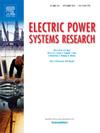Joint application of Crested Porcupine Optimizer and hybrid models in short-term wind power load forecasting
IF 3.3
3区 工程技术
Q2 ENGINEERING, ELECTRICAL & ELECTRONIC
引用次数: 0
Abstract
With the large-scale grid integration of renewable energy sources such as wind power, their inherent uncertainty and prediction difficulty pose challenges to power grid dispatching. To address this, this paper proposes for the first time a combination of the Crested Porcupine Optimizer (CPO) with Temporal Convolutional Networks (TCN), Bidirectional Gated Recurrent Units (BiGRU), and self-attention mechanisms to construct a short-term wind power load forecasting model. Initially, TCN enhances the model’s ability to process time series data. Then, BiGRU captures bidirectional dependencies. Finally, the attention mechanism assigns weights to highly relevant information. Compared with traditional static parameter models, CPO dynamically adjusts the kernel size of TCN, the dimension of BiGRU hidden layers, attention weights, and regularization coefficients through the Cyclic Population Reduction (CPR) technique, significantly improving the model’s prediction accuracy. Compared with the unoptimized TCN-BiGRU-Attention model, our method reduces the Mean Squared Error (MSE) by 32.18%, and compared with the model optimized by the Grey Wolf Optimizer, the Root Mean Squared Error (RMSE) is reduced by 30.48%. The prediction error of CPO-TCN-BiGRU-Attention is significantly lower than that of other models, as confirmed by the Wilcoxon signed-rank test ( 0.05), providing high-precision support for practical power grid dispatching.
峰顶豪猪优化器与混合模型在风电短期负荷预测中的联合应用
随着风电等可再生能源的大规模并网,其固有的不确定性和预测难度给电网调度带来了挑战。为解决这一问题,本文首次提出将冠猪优化器(CPO)与时间卷积网络(TCN)、双向门控循环单元(BiGRU)和自关注机制相结合,构建风电短期负荷预测模型。最初,TCN增强了模型处理时间序列数据的能力。然后,BiGRU捕获双向依赖。最后,注意机制为高度相关的信息分配权重。与传统静态参数模型相比,CPO通过循环总体约简(Cyclic Population Reduction, CPR)技术动态调整TCN的核大小、BiGRU隐藏层的维数、关注权和正则化系数,显著提高了模型的预测精度。与未优化的TCN-BiGRU-Attention模型相比,本文方法的均方误差(Mean Squared Error, MSE)降低了32.18%,均方根误差(Root Mean Squared Error, RMSE)与灰狼优化器优化的模型相比降低了30.48%。CPO-TCN-BiGRU-Attention模型的预测误差显著低于其他模型,经Wilcoxon sign -rank检验(p <;0.05),为实际电网调度提供高精度支持。
本文章由计算机程序翻译,如有差异,请以英文原文为准。
求助全文
约1分钟内获得全文
求助全文
来源期刊

Electric Power Systems Research
工程技术-工程:电子与电气
CiteScore
7.50
自引率
17.90%
发文量
963
审稿时长
3.8 months
期刊介绍:
Electric Power Systems Research is an international medium for the publication of original papers concerned with the generation, transmission, distribution and utilization of electrical energy. The journal aims at presenting important results of work in this field, whether in the form of applied research, development of new procedures or components, orginal application of existing knowledge or new designapproaches. The scope of Electric Power Systems Research is broad, encompassing all aspects of electric power systems. The following list of topics is not intended to be exhaustive, but rather to indicate topics that fall within the journal purview.
• Generation techniques ranging from advances in conventional electromechanical methods, through nuclear power generation, to renewable energy generation.
• Transmission, spanning the broad area from UHV (ac and dc) to network operation and protection, line routing and design.
• Substation work: equipment design, protection and control systems.
• Distribution techniques, equipment development, and smart grids.
• The utilization area from energy efficiency to distributed load levelling techniques.
• Systems studies including control techniques, planning, optimization methods, stability, security assessment and insulation coordination.
 求助内容:
求助内容: 应助结果提醒方式:
应助结果提醒方式:


